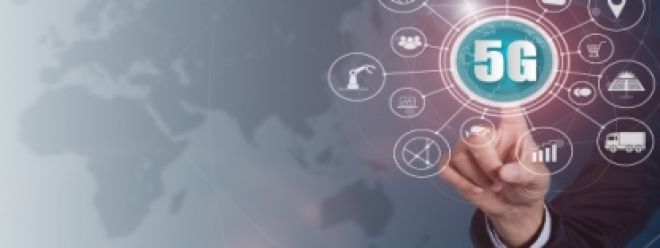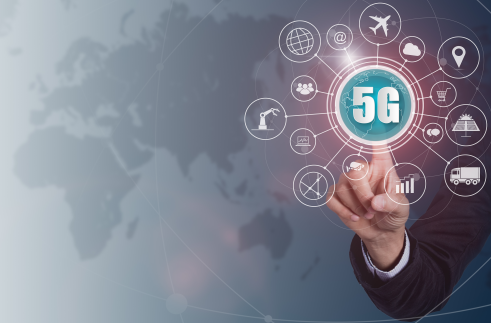What Failed 5G Deployment Means for 6G

What Failed 5G Deployment Means for 6G

When 5G was introduced in the UK, communications regulator Ofcom set its sights on the island as a beacon for the next-generation technology. In fact, former prime minister Boris Johnson often made grandiose promises to the tech industry, with 5G and full-fibre broadband among the most common tech talking points in his administration.
However, long before Johnson took over 10 Downing Street, Ofcom itself assessed the potential of future 5G networks, declaring that "5G could allow new companies to enter the market and offer new services to businesses and consumers". However, recent news that Vodafone and Three found a merger necessary due to high costs, low adoption and unattainable coverage targets suggests that the market is faltering.
While some attention is now turning to its successor, 6G, consumers could be forgiven for being disappointed given the current state of affairs. As CCS Insight analyst Kester Mann explains, 5G has a lot going on when it rolls out. “5G has been around for so long; there’s so much hype and anticipation, it’s big news every year at MWC,” he said.
“We hear all these things about connected autonomous vehicles, drones and enterprise use cases that could eventually happen,” he added. "Obviously the consumer market is the first to embrace 5G, but the industry never really had a compelling use case or reason to encourage people to upgrade to new 5G smartphones or embrace 5G service."
Filling the 5G demand gap
Mann continued that CCS Insight's research on 5G perceptions shows that the challenge for operators is that people don't think they need 5G. This sentiment echoes that of Richard Thurston, research manager for 5G strategy at IDC, although he did hint that use cases are still emerging.
“Initially, there will be a lot of focus on 5G speed, offering lower latency or supporting more simultaneous Internet of Things (IoT) connections, that’s all true, but enterprises – and this is the sweet spot – will focus on business outcomes, So it's imperative for the mobile industry to focus on the use cases that enable these outcomes," Thurston told IT Pro.
"The good news is that these use cases are emerging and all industries are benefiting, whether it's retail, healthcare, manufacturing or transportation, helping to create new products and better ways of working."
He added that IDC forecasts show that 5G adoption in the UK is in a growth phase, with 29.4 million 5G connections expected by the end of 2022 and 5G surpassing 4G by 2024. “It’s important to be realistic; businesses face real challenges given what we call disruption storms,” he continued. "There is rarely one specific technology that fits all. It's more important to have the right solution for the customer."
overcoming geopolitical obstacles
These "disruption storms" are a regular occurrence for the tech industry, and it's fair to say that the rollout of 5G has been plagued by obstacles.
Even before the launch of 5G in June 2019, US President Donald Trump had set his sights on leading network infrastructure supplier Huawei. He made the Chinese internet giants part of a trade war, then pressured Britain to follow suit.
In subsequent years, the UK banned Huawei from using its technology to build any part of the UK's 5G infrastructure. Then came a global pandemic, a shortage of semiconductor chips, and a shift in corporate attitudes -- a renewed focus on working from home instead of travel -- that dampened interest in 5G.
Paolo Pescatore, a telecom analyst at PP Foresight, added that inflation and the cost of living crisis are other major issues that telecom companies now have to grapple with. While 5G adoption looks likely to continue to increase, it won't be seen as a welcome feature, he said.
"There is significant uncertainty in the market," he said. "Prices are going in the wrong direction and consumers are feeling the pinch and are starting to tighten their belts. We've seen businesses across all industries raise prices and the cost increases are inevitably being passed on to consumers.
"In the coming months, people will be forced to make decisions about their devices, services and subscriptions. Some will downgrade, some will cancel entirely, and some will happily sign up for premium bundles as long as they bring significant value."
Still, Pescatore said 5G adoption will expand naturally, albeit gradually, as people upgrade their devices. Ultimately, consumers want ubiquitous connectivity.
Thurston agreed that inflation could also be another challenge for networks to overcome, with equipment supply chain issues, energy crises and high inflation levels continuing to affect all industries. “In terms of the future,” he added, “sustainability will be an increasing focus, and as mobile data consumption and energy prices rise, operators will be challenged to manage costs, so they are looking for improvements in network equipment. energy saving function."
6G must target enterprises
Despite the challenges in the 5G market, if you've been lucky enough to attend MWC anytime in the past three years, you'll have noticed that 6G is already a major talking point. However, with 5G rollouts seemingly struggling in an apathetic and incomplete market, what lessons can the industry draw? Mann and Pescatore believe the answer lies with businesses.
"It's exciting to see what happens next, and I'm sure we'll be hearing a lot more about 6G in the coming years, but we've barely scratched the surface of the 5G opportunity," Mann said. "I think the operators will want to take advantage of 5G as much as possible, and while it hasn't happened on the consumer side, the industry has a lot of hope for the enterprise side.
"One of the angles that we've been discussing at CCS is whether it's a mistake for 5G to target consumers first -- remember, expectations don't exactly match up. So maybe there's an opportunity for 6G from the enterprise side, rather than on the consumer side.”
"We are still in the early stages of 5G rollout," Pescatore added. “However, ultimately, 5G opens up new use cases in the enterprise space. The benefits of 5G will be better served by enterprises that require ultra-low latency, robust and fast dedicated connections for their connectivity needs. Network slicing, for example, provides telecommunications companies with It is an important means to recover 5G investment.
While margins are being squeezed, network deployment and spectrum will still require significant investment, and the business model for 5G in the consumer world remains unclear and unproven. This should be taken into account when operators roll out technologies such as 6G in the future to transform the workplace. This is because the industry needs to avoid the same mistakes it has made over the past few years to ensure viable services are more accessible and affordable.